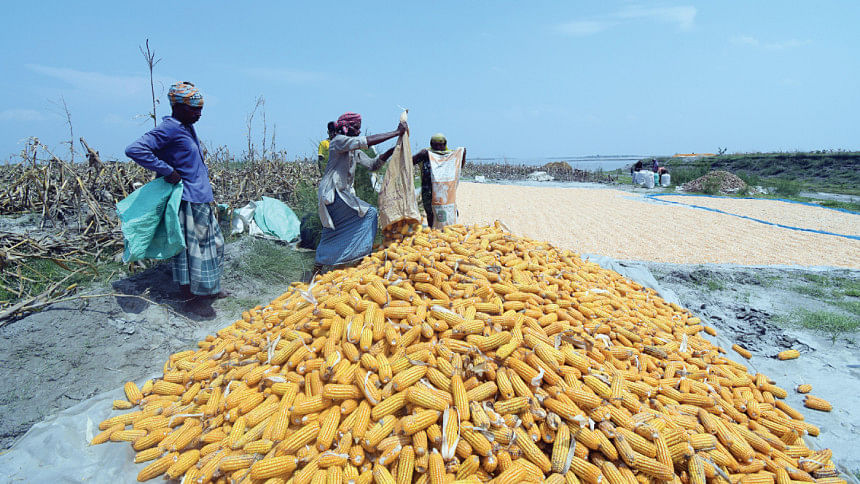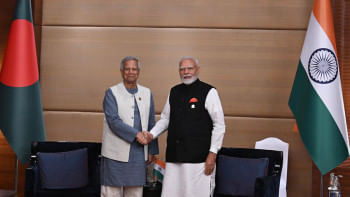Tk 209cr project to boost char crop output

The government has initiated an agricultural project at a cost of Tk 209 crore with the aim to increase production of crops in char areas by expanding the use of modern technologies.
The Executive Committee of the National Economic Council approved the project in a meeting chaired by Prime Minister Sheikh Hasina last Tuesday.
The planning commission said the project would contribute positively to crop diversity and agricultural commercialisation while also bolstering food security, national nutritional needs and socio-economic development.
The Department of Agricultural Extension (DAE), under the agriculture ministry, will implement the project in 121 upazilas across 34 districts by June 2027.
According to the project proposal, the main activities include skills development trainings for farmers, field days, seminars and workshops, technology exhibitions, distribution of solar light traps and construction of facilities for farmers.
The aim is to increase yields of sugarcane, guava, mango, watermelon, sweet orange, corn, sweet potato, pepper, jute, seeds of black cumin, sunflower and mustard and legumes including lentils, soybean and mung beans.
Drought-resilient and short-duration crop varieties alongside suitable agricultural technologies will be employed in the char areas, which are basically low-lying islands naturally formed by silt from rivers flowing into the Bay of Bengal.
The project aims to increase yields of sugarcane, guava, mango, watermelon, sweet orange, corn, sweet potato, pepper, jute, seeds of black cumin, sunflower and mustard and legumes including lentils, soybean and mung beans.
There are a lot of fallow land or "problem areas" in char areas which are usually used to grow one crop a year, said Prof Jahangir Alam Khan, an agriculture economist.
The national average for a piece of land is around two crops a year or 200 percent, he told The Daily Star yesterday.
The DAE aims to increase crop intensity in char areas to anywhere from 140 percent to 145 percent using advanced agricultural technologies.
If the authorities can adopt new technologies in char areas, it will help increase the overall production, added Khan, also a former president of Bangladesh Agricultural Economists' Association.
There is little income generating opportunity for the lower-income population usually found in char areas and this project, if implemented properly, will help them become more financially solvent and ensure food security, he said.
"The project is based on prioritising people in char areas," said Md Sayduzzaman, division chief of the agriculture, water resources and rural institutions division of the planning commission.
"On receiving the proposal (from the DAE), we scrutinised it and scrapped some components," he said.
For example, the commission rejected a proposal to purchase jeeps and double-cabin vehicles. It also raised questions about printing and binding costs amounting to Tk 80 lakh, which the DAE later revised to Tk 40 lakh.
The planning commission also asked the DAE to introduce biodegradable trays for saplings instead of plastic trays to reduce pollution.

 For all latest news, follow The Daily Star's Google News channel.
For all latest news, follow The Daily Star's Google News channel. 



Comments